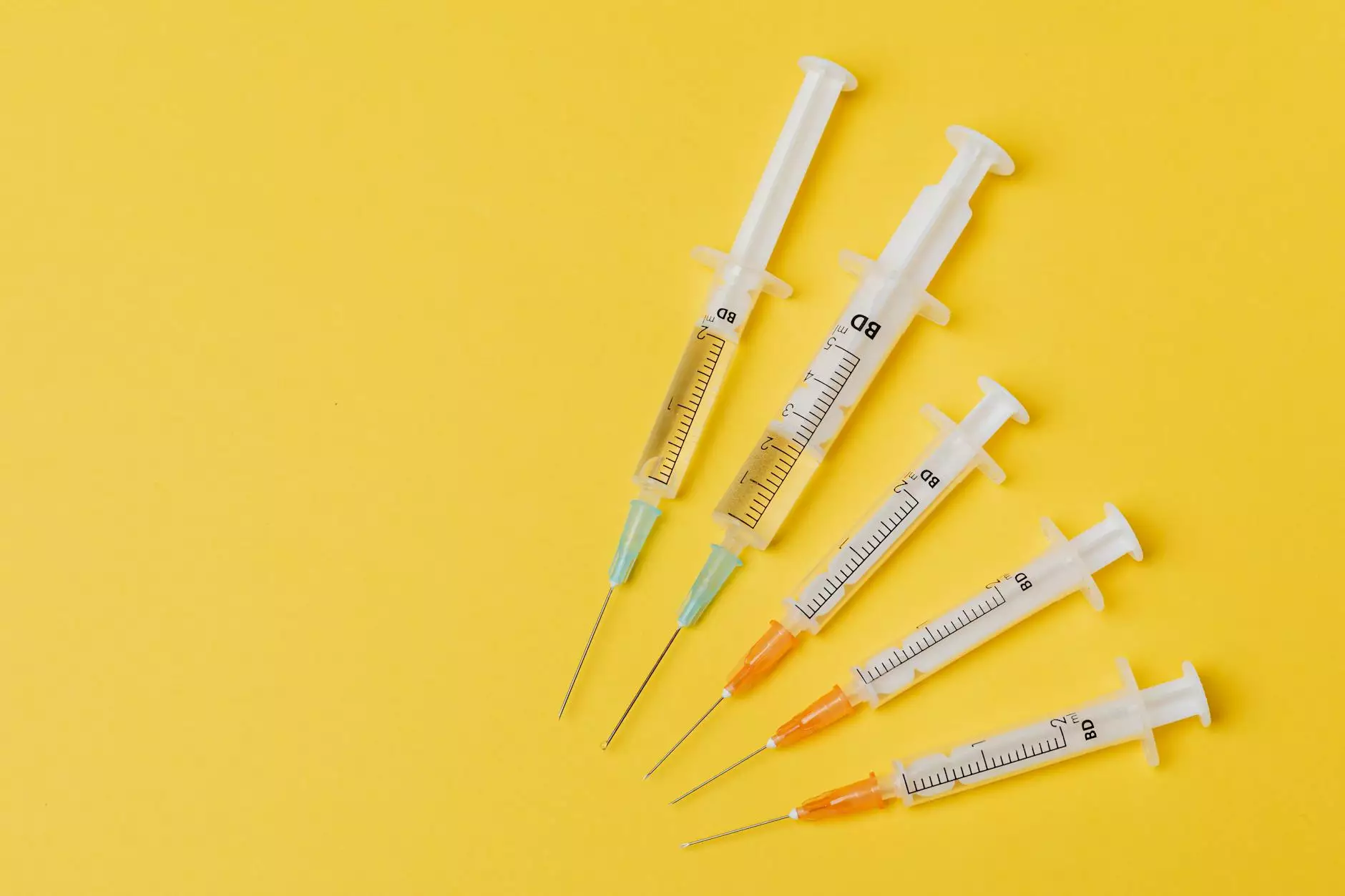Comprehensive Guide to Edema in Calf: Causes, Symptoms, Treatments, and Prevention

Edema in calf is a common yet often misunderstood medical condition characterized by swelling, discomfort, and sometimes difficulty in movement. While edema can affect any part of the body, calf swelling is particularly concerning due to its association with serious health issues such as deep vein thrombosis (DVT), vascular insufficiency, and other underlying conditions. Understanding the causes, recognizing symptoms early, and seeking specialized medical care are essential steps towards effective management and improved quality of life.
What Is Edema in Calf?
Edema in calf refers to the accumulation of excess fluid within the tissues of the lower leg, leading to noticeable swelling. This swelling may be localized or affect the entire calf and can vary in severity from mild discomfort to a visibly swollen and hard limb. It often indicates an underlying problem with circulation, lymphatic drainage, or other physiological processes that control fluid balance within the body.
Causes of Edema in Calf
The causes of edema in calf are diverse, ranging from benign to potentially life-threatening conditions. A thorough medical evaluation is necessary for accurate diagnosis. Common causes include:
- Venous Insufficiency: When the veins in the legs fail to efficiently return blood to the heart, leading to blood pooling and fluid leakage into surrounding tissues.
- Deep Vein Thrombosis (DVT): The formation of a blood clot in a deep vein, which can cause swelling, pain, and risk of pulmonary embolism if untreated.
- Lymphedema: Blockage or damage to lymphatic vessels impairs lymph fluid drainage, causing swelling.
- Heart, Kidney, or Liver Disease: Conditions such as congestive heart failure, nephrotic syndrome, or cirrhosis can lead to fluid retention in the lower extremities.
- Injury or Trauma: Sprains, fractures, or muscular injuries may lead to localized swelling in the calf.
- Medications: Certain drugs, including calcium channel blockers, corticosteroids, and hormone therapy, may cause fluid retention.
- Prolonged Immobility: Extended periods of inactivity or bed rest reduce muscle pump activity, resulting in fluid buildup.
Recognizing Symptoms of Edema in Calf
Symptoms associated with edema in calf can vary depending on the cause. Key indicators include:
- Visible swelling or puffiness of the calf
- Feeling of tightness or heaviness in the leg
- Pain or tenderness, especially when walking or standing
- Skin that feels warm, glossy, or stretched
- Discoloration or skin discoloration over the swollen area
- Limited mobility or difficulty moving the ankle or foot
- In cases of DVT, additional symptoms such as redness, warmth, and sudden onset swelling
The Importance of Medical Assessment for Edema in Calf
If you experience edema in calf, especially if it appears suddenly, is severe, or is accompanied by pain, redness, or shortness of breath, it is crucial to seek medical attention promptly. Proper diagnosis involves physical examination and may include diagnostic imaging such as Doppler ultrasound, venography, or blood tests to identify the exact cause and assess the severity of the condition.
Effective Treatments for Edema in Calf
Management of edema in calf is highly individualized, depending on the underlying problem. The primary goal is to reduce swelling, improve circulation, and address root causes. Treatment options include:
Conservative Approaches
- Compression Therapy: Use of compression stockings or bandages to support venous and lymphatic drainage.
- Elevation: Elevating the legs above heart level several times a day helps gravity assist fluid return.
- Exercise and Movement: Regular walking, calf muscle strengthening, and physiotherapy enhance circulation.
- Medications: Diuretics may be prescribed in cases of fluid overload, along with blood thinners for DVT.
- Dietary Adjustments: Reducing salt intake minimizes fluid retention.
Advanced Medical Interventions
- Vascular Surgery: Procedures such as vein stripping, endovenous laser therapy, or sclerotherapy to treat venous insufficiency.
- Thrombectomy: Surgical removal of a blood clot in severe DVT cases.
- Lymphatic Drainage Therapy: Specialized manual therapy to enhance lymphatic flow in cases of lymphedema.
- Addressing Underlying Conditions: Managing heart, kidney, or liver diseases with appropriate medications and lifestyle modifications.
Preventive Measures to Avoid Edema in Calf
Prevention is key to reducing the risk of edema in calf. Preventive strategies include:
- Engaging in regular physical activity to strengthen leg muscles and promote healthy circulation.
- Wearing compression stockings if prone to venous issues or during long periods of sitting or travel.
- Maintaining a healthy weight to reduce strain on leg veins and lymphatic pathways.
- Avoiding prolonged immobility—taking breaks to move and stretch during lengthy journeys or desk work.
- Controlling underlying health conditions through proper medical management.
The Role of Vascular Medicine Specialists in Managing Edema in Calf
At Truffle Vein Specialists, our highly trained Doctors and Vascular Medicine experts specialize in diagnosing and treating complex vascular conditions that lead to edema in calf. Our comprehensive approach involves detailed diagnostics, personalized treatment plans, minimally invasive procedures, and ongoing management to ensure optimal venous and lymphatic health.
Our expertise extends to:
- Advanced ultrasound diagnostics
- Non-surgical interventions for venous reflux and varicose veins
- Comprehensive care for deep vein thrombosis
- Lymphedema management programs
- Patient education on prevention and lifestyle modifications
Why Choose Truffle Vein Specialists for Edema in Calf?
Choosing the right medical provider is crucial for effective treatment and long-term health. At Truffle Vein Specialists, our team is committed to excellence through:
- State-of-the-art diagnostic tools and minimally invasive treatment options
- Personalized treatment plans tailored to each patient's unique needs
- Comprehensive education and support throughout the treatment process
- Focus on patient comfort, safety, and optimal outcomes
- Collaborative approach with primary care physicians and specialists
Conclusion: Taking Action Against Edema in Calf
While edema in calf can be a sign of underlying health issues, early intervention and targeted treatment can significantly improve outcomes and prevent complications. If you notice persistent swelling, pain, or changes in your legs, do not delay consulting a vascular medicine specialist. At Truffle Vein Specialists, we dedicate ourselves to restoring your vascular health and enhancing your quality of life through advanced, compassionate care.
Remember, addressing edema in calf early can save you from more serious health issues down the line. Reach out to our team today for a comprehensive evaluation and personalized treatment plan to keep your legs healthy and strong.









